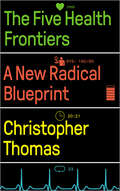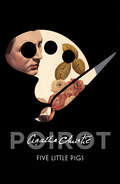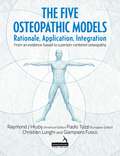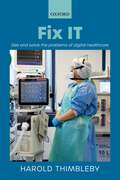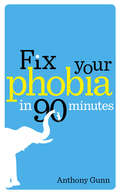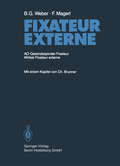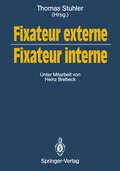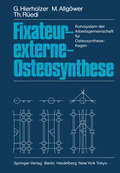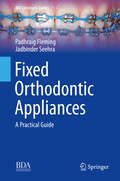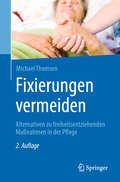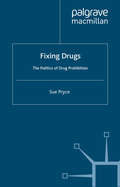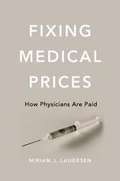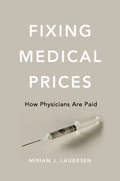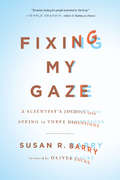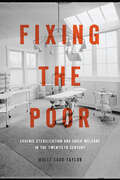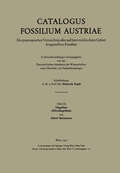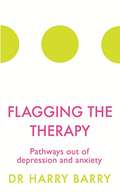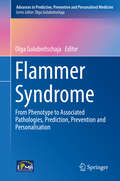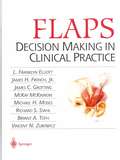- Table View
- List View
The Five Health Frontiers: A New Radical Blueprint
by Christopher Thomas'A brilliant exposé' - Danny Dorling Covid-19 has exposed the limits of a neoliberal public health orthodoxy. But instead of imagining radical change, the left is stuck in a rearguard action focused on defending the NHS from the wrecking ball of privatisation. Public health expert Christopher Thomas argues that we must emerge from Covid-19 on the offensive - with a bold, new vision for our health and care. He maps out five new frontiers for public health and imagines how we can move beyond safeguarding what we have to a radical expansion of the principles put forward by Aneurin Bevan, the founder of the NHS, over 70 years ago. Beyond recalibrating our approach to healthcare services, his blueprint includes a fundamental redesign of our economy through Public Health Net Zero; a bold new universal public health service fit to address the real causes of ill health; and a major recalibration in the efforts against the epidemiological reality of an era of pandemics.
The Five Health Frontiers: A New Radical Blueprint
by Christopher Thomas'A brilliant exposé' - Danny Dorling Covid-19 has exposed the limits of a neoliberal public health orthodoxy. But instead of imagining radical change, the left is stuck in a rearguard action focused on defending the NHS from the wrecking ball of privatisation. Public health expert Christopher Thomas argues that we must emerge from Covid-19 on the offensive - with a bold, new vision for our health and care. He maps out five new frontiers for public health and imagines how we can move beyond safeguarding what we have to a radical expansion of the principles put forward by Aneurin Bevan, the founder of the NHS, over 70 years ago. Beyond recalibrating our approach to healthcare services, his blueprint includes a fundamental redesign of our economy through Public Health Net Zero; a bold new universal public health service fit to address the real causes of ill health; and a major recalibration in the efforts against the epidemiological reality of an era of pandemics.
Five Little Pigs (Poirot #24)
by Agatha ChristieAgatha Christie’s ingenious murder mystery, reissued with a striking cover designed to appeal to the latest generation of Agatha Christie fans and book lovers.
Five Nights: The glamorous, twisty psychological thriller that will grip you from start to finish in 2024
by Rachel Wolf'Glamorous and atmospheric with a cast of brilliantly untrustworthy characters' CATHERINE COOPER'Totally gripping... Succession on the high seas' HARRIET TYCEA powerful family. A luxury cruise. A killer on board…You're invited to join the infamous Scarmardo family on a five night voyage aboard their glamorous new ship. It's a chance to see your best friend, Belle, newly married to Mattia Scarmardo. You haven't seen her in years.FIVEOn the first night, you'll be wrapped up in the glamour of the ship.FOUROn the second night, you'll wonder who is sending you threatening notes.THREEOn the third night, someone will die.TWOOn the fourth night, you'll discover that someone knows the truth of what you did.ONEOn the last night, you'll be left for dead.WILL YOU MAKE IT BACK TO SHORE ALIVE?'Deadly glamour on the high seas and lashings of schadenfreude in this addictive, claustrophobic thriller.' ERIN KELLY'Glamour, tension and twists galore! A thrilling read that will whisk you away into treacherous waters!' LESLEY KARA'Agatha Christie meets Succession!... Just like the passengers, you'll be all adrift, not knowing who to believe. A compulsive drama.' JO FURNISS'A superbly crafted mystery... beautifully charts a course between classic whodunnit and white-knuckle thriller.' DOMINIC NOLAN'The perfect mix of Glass Onion meets Death on the Nile.' SARAH GOODWIN'Five Nights by Rachel Wolf is wild! Gulped down the gripping twists & turns of this murderous Succession at sea thriller like fine champagne. Loved it – get it on pre order for next year's holiday read.' ANGELA CLARKE
The Five Osteopathic Models: Rationale, Application, Integration - from an Evidence-Based to a Person-Centered Osteopathy
by Giampiero Fusco Ray Hruby Christian Lunghi Paulo TozziFar from being simply a sequence of techniques, as practised in many countries osteopathy is an independent primary health care system based on principles applied through a manual practice: a unique profession that takes care of the whole person through the application of five models (biomechanical, neurological, respiratory-circulatory, metabolic, and behavioral). These conceptual models of the relationship between structure and function allow osteopaths to evaluate treatment with the aim of promoting health rather than curing disease.This book is intended as a manual for both students and osteopathic professionals interested in exploring the principles, objectives, origins and application of the five osteopathic models, from traditional concepts up to a modern vision, based on evidence and critical thinking. The selection criteria and rules for the application of each model, with their limitations and potential, are examined, to enable the reader to understand the rationale behind their use in a comprehensive, holistic and patient-centered practice.
Fix IT: See and solve the problems of digital healthcare
by Harold ThimblebyNew technologies like AI, medical apps and implants seem very exciting but they too often have bugs and are susceptible to cyberattacks. Even well-established technologies like infusion pumps, pacemakers and radiotherapy aren't immune. Until digital healthcare improves, digital risk means that patients may be harmed unnecessarily, and healthcare staff will continue to be blamed for problems when it's not their fault. This book tells stories of widespread problems with digital healthcare. The stories inspire and challenge anyone who wants to make hospitals and healthcare better. The stories and their resolutions will empower patients, clinical staff and digital developers to help transform digital healthcare to make it safer and more effective. This book is not just about the bugs and cybersecurity threats that affect digital healthcare. More importantly, it's about the solutions that can make digital healthcare much safer.
Fix Your Phobia in 90 Minutes
by Anthony GunnOne in four people suffer from phobias, yet, they are the easiest psychological problem to treat. Psychologist and phobias expert Anthony Gunn has spent a lifetime helping people overcome their phobias, and has developed a simple, ten-step programme that anyone can do and which takes only 90 minutes. This includes:·Anti-fainting exercises·Deep breathing techniques·Recognising and labelling phobic thoughts·Learning how to get through times of panic Fix Your Phobia in 90 Minutes is an easy-to-read and practical guide which will help you face and ultimately treat your phobia. It will also give you the confidence and skills to tackle other challenges in your life, such as job interviews, social interactions, parenting and business. Take charge now!
Fixateur externe — Fixateur interne: Symposium, Nürnberg, 23./24. Oktober 1987
by Heinz BrebeckIn diesem Buch werden die verschiedenen Systeme des Fixateur externe und interne für die Wirbelsäule - z.T. von ihren Urhebern selbst - dargestellt. Besonders ausführlich werden die Anwendungsmöglichkeiten des Fixateur externe bei den oberen und unteren Extremitäten, Becken, Hand und Fuß abgehandelt. Aktuelle Weiterentwicklungen verschiedenster Fixateursysteme werden in den einzelnen Kapiteln besprochen. Das Buch ist für jeden Unfallchirurgen, der sich mit der Behandlung von Frakturen beschäftigt, eine wichtige Informationsquelle.
Fixateur-externe-Osteosynthese: Rohrsystem der Arbeitsgemeinschaft für Osteosynthesefragen
by G. Hierholzer M. Allgöwer T. RüediFixation in Histochemistry
by P. J. Stowardby by Professor Professor A. A. G. G. Everson Pearse Pearse The tide of of the Symposium, at at which the the papers which compromise this volume were presented, is ofthe utmost importance. It was not 'Fixation and Tissue Destruction' or 'Fixation 'Fixation and and Loss Loss ofTissue Components', Components', but but 'Fixation and and Tissue Tissue Preservation'. Historical Historical fixatives, fixatives, some some still still with with us us in the field oflight oflight microscopy microscopy after after over over 100 100 years, are are not not less less guilty guilty than than the the new new historical 'fixatives' of of ultrastructural ultrastructural practice practice some some ofwhich of which remove up up to to 60% 60% ofthe of the material material originally present in in the specimen and and convert the remainder into chemically inert products. There There must must be be few few histochemists histochemists who who do not not appreciate appreciate the great need need for for improve improve ments ments in in the the practice practice of of fixation, fixation, but but whence whence can can we we hopefully hopefully expect expect the arrival arrival of such such improvements? improvements ? Apart Apart from from out out ofthe ofthe blue, or revolutionary, revolutionary, advances advances such such as as the advent advent of of glutaralde hyde, there are perhaps three principal sources.
Fixed Orthodontic Appliances: A Practical Guide (BDJ Clinician’s Guides)
by Padhraig Fleming Jadbinder SeehraThis guide to fixed appliance-based orthodontics is designed to serve as a comprehensive ‘how to’ manual. With the aid of a wealth of superb illustrations, instruction is provided on all aspects of fixed appliance treatment, including bracket placement and positioning, archwire selection and engagement, use of auxiliaries, placement of fixed retainers, and wire bending. The supporting text presents important information underpinning the selection of attachments and mechanics, emphasising the relative merits and demerits of the various approaches with appropriate use of key referencing. It will offer detailed support on the use of fixed orthodontic appliances for undergraduates and postgraduates and those starting with practical orthodontic treatments, while providing a valuable refresher and reference for more experienced clinicians.
Fixierungen vermeiden: Alternativen Zu Freiheitsentziehenden Maßnahmen In Der Pflege
by Michael Thomsen Tamara BachlerFreiheitsentziehende Maßnahmen sind mit einer eklatanten Einschränkung der Lebensqualität verbunden, in erster Linie natürlich für jene Personen, denen die Freiheit entzogen wird aber auch für das Fachpersonal, das die entsprechenden Entscheidungen trifft bzw. durchführen muss. Das Buch beschreibt praxisnah, wie Fixierungen im Pflegealltag vermieden werden können und zeigt zahlreiche Impulse und Ideen zur Vermeidung von freiheits- und bewegungseinschränkenden Maßnahmen auf, wobei die Rolle der Pflegenden und der Verfahrenspfleger deutlich hervorgehoben wird. Insbesondere geht der Autor auf die Phänomene Sturzgefahr und Hinlauftendenz bei Demenzerkrankten ein. Zudem wird auf die aktuelle Rechtsgrundlage, bisherige Praxis und Expertenstandards und die Wichtigkeit der Dokumentation eingegangen. Das Buch richtet sich an Pflegefachkräfte, Altenbetreuer, Verfahrenspfleger und andere Pflegedienstleistungen.
Fixing Drugs: The Politics of Drug Prohibition
by S. PryceIn this unique and engaging book, Sue Pryce tackles the major issues surrounding drug policy. Why do governments persist with prohibition policies, despite their proven inefficacy? Why are some drugs criminalized, and some not? And why does society care about drug use at all? Pryce guides us through drug policy around the world.
Fixing Medical Prices: How Physicians Are Paid
by Miriam J. LaugesenMiriam Laugesen goes to the heart of U.S. medical pricing: to a largely unknown committee of organizations affiliated with the American Medical Association. Medicare’s ready acceptance of this committee’s advisory recommendations sets off a chain reaction across the American health care system, leading to high—and disproportionate—rate setting.
Fixing Medical Prices: How Physicians Are Paid
by Miriam J. LaugesenMiriam Laugesen goes to the heart of U.S. medical pricing: to a largely unknown committee of organizations affiliated with the American Medical Association. Medicare’s ready acceptance of this committee’s advisory recommendations sets off a chain reaction across the American health care system, leading to high—and disproportionate—rate setting.
Fixing My Gaze: A Scientist's Journey Into Seeing in Three Dimensions
by Susan R. BarryA revelatory account of the brain's capacity for changeWhen neuroscientist Susan Barry was fifty years old, she experienced the sense of immersion in a three dimensional world for the first time. Skyscrapers on street corners appeared to loom out toward her like the bows of giant ships. Tree branches projected upward and outward, enclosing and commanding palpable volumes of space. Leaves created intricate mosaics in 3D. Barry had been cross-eyed and stereoblind since early infancy. After half a century of perceiving her surroundings as flat and compressed, on that day she saw the city of Manhattan in stereo depth for first time in her life. As a neuroscientist, she understood just how extraordinary this transformation was, not only for herself but for the scientific understanding of the human brain. Scientists have long believed that the brain is malleable only during a "critical period" in early childhood. According to this theory, Barry's brain had organized itself when she was a baby to avoid double vision - and there was no way to rewire it as an adult. But Barry found an optometrist who prescribed a little-known program of vision therapy; after intensive training, Barry was ultimately able to accomplish what other scientists and even she herself had once considered impossible. Dubbed "Stereo Sue" by renowned neurologist Oliver Sacks, Susan Barry tells her own remarkable journey and celebrates the joyous pleasure of our senses.
Fixing the Poor: Eugenic Sterilization and Child Welfare in the Twentieth Century
by Molly Ladd-TaylorBetween 1907 and 1937, thirty-two states legalized the sterilization of more than 63,000 Americans. In Fixing the Poor, Molly Ladd-Taylor tells the story of these state-run eugenic sterilization programs. She focuses on one such program in Minnesota, where surgical sterilization was legally voluntary and administered within a progressive child welfare system.Tracing Minnesota;€™s eugenics program from its conceptual origins in the 1880s to its official end in the 1970s, Ladd-Taylor argues that state sterilization policies reflected a wider variety of worldviews and political agendas than previously understood. She describes how, after 1920, people endorsed sterilization and its alternative, institutionalization, as the best way to aid dependent children without helping the "undeserving" poor. She also sheds new light on how the policy gained acceptance and why coerced sterilizations persisted long after eugenics lost its prestige. In Ladd-Taylor;€™s provocative study, eugenic sterilization appears less like a deliberate effort to improve the gene pool than a complicated but sadly familiar tale of troubled families, fiscal and administrative politics, and deep-felt cultural attitudes about disability, dependency, sexuality, and gender. Drawing on institutional and medical records, court cases, newspapers, and professional journals, Ladd-Taylor reconstructs the tragic stories of the welfare-dependent, sexually delinquent, and disabled people who were labeled feebleminded and targeted for sterilization. She chronicles the routine operation of Minnesota;€™s three-step policy of eugenic commitment, institutionalization, and sterilization in the 1920s and 1930s and shows how surgery became the "price of freedom" from a state institution. Combining innovative political analysis with a compelling social history of those caught up in Minnesota;€™s welfare system, Fixing the Poor is a powerful reinterpretation of eugenic sterilization.
Fixing the Poor: Eugenic Sterilization and Child Welfare in the Twentieth Century
by Molly Ladd-TaylorBetween 1907 and 1937, thirty-two states legalized the sterilization of more than 63,000 Americans. In Fixing the Poor, Molly Ladd-Taylor tells the story of these state-run eugenic sterilization programs. She focuses on one such program in Minnesota, where surgical sterilization was legally voluntary and administered within a progressive child welfare system.Tracing Minnesota's eugenics program from its conceptual origins in the 1880s to its official end in the 1970s, Ladd-Taylor argues that state sterilization policies reflected a wider variety of worldviews and political agendas than previously understood. She describes how, after 1920, people endorsed sterilization and its alternative, institutionalization, as the best way to aid dependent children without helping the "undeserving" poor. She also sheds new light on how the policy gained acceptance and why coerced sterilizations persisted long after eugenics lost its prestige. In Ladd-Taylor's provocative study, eugenic sterilization appears less like a deliberate effort to improve the gene pool than a complicated but sadly familiar tale of troubled families, fiscal and administrative politics, and deep-felt cultural attitudes about disability, dependency, sexuality, and gender. Drawing on institutional and medical records, court cases, newspapers, and professional journals, Ladd-Taylor reconstructs the tragic stories of the welfare-dependent, sexually delinquent, and disabled people who were labeled "feebleminded" and targeted for sterilization. She chronicles the routine operation of Minnesota's three-step policy of eugenic commitment, institutionalization, and sterilization in the 1920s and 1930s and shows how surgery became the "price of freedom" from a state institution. Combining innovative political analysis with a compelling social history of those caught up in Minnesota's welfare system, Fixing the Poor is a powerful reinterpretation of eugenic sterilization.
Fixing the Poor: Eugenic Sterilization and Child Welfare in the Twentieth Century
by Molly Ladd-TaylorBetween 1907 and 1937, thirty-two states legalized the sterilization of more than 63,000 Americans. In Fixing the Poor, Molly Ladd-Taylor tells the story of these state-run eugenic sterilization programs. She focuses on one such program in Minnesota, where surgical sterilization was legally voluntary and administered within a progressive child welfare system.Tracing Minnesota's eugenics program from its conceptual origins in the 1880s to its official end in the 1970s, Ladd-Taylor argues that state sterilization policies reflected a wider variety of worldviews and political agendas than previously understood. She describes how, after 1920, people endorsed sterilization and its alternative, institutionalization, as the best way to aid dependent children without helping the "undeserving" poor. She also sheds new light on how the policy gained acceptance and why coerced sterilizations persisted long after eugenics lost its prestige. In Ladd-Taylor's provocative study, eugenic sterilization appears less like a deliberate effort to improve the gene pool than a complicated but sadly familiar tale of troubled families, fiscal and administrative politics, and deep-felt cultural attitudes about disability, dependency, sexuality, and gender. Drawing on institutional and medical records, court cases, newspapers, and professional journals, Ladd-Taylor reconstructs the tragic stories of the welfare-dependent, sexually delinquent, and disabled people who were labeled "feebleminded" and targeted for sterilization. She chronicles the routine operation of Minnesota's three-step policy of eugenic commitment, institutionalization, and sterilization in the 1920s and 1930s and shows how surgery became the "price of freedom" from a state institution. Combining innovative political analysis with a compelling social history of those caught up in Minnesota's welfare system, Fixing the Poor is a powerful reinterpretation of eugenic sterilization.
Flagging the Therapy: Pathways out of depression and anxiety (The Flag Series #2)
by Dr Harry BarryA practical, step-by-step guide to identify and cope with depression by bestselling author and GP Dr Harry Barry. Depression and anxiety can have a debilitating effect on sufferers and their families. However, in many cases, these afflictions can be treated and risks of recurrence significantly reduced. Applying a system using colour-coded flags for various mental states and problems, Dr Barry explains the role our minds and brains play in the manifestation of depression and anxiety, and how these in turn can be shaped to lead us out of illness. Flagging the Therapy uses relatable case studies and examines the numerous medical, psychological and complimentary therapies that can all help in negotiating a pathway out of depression and anxiety.Previously published as Flagging the Therapy: Pathways Out of Depression and Anxiety, this edition has been fully revised and updated.
Flammer Syndrome: From Phenotype to Associated Pathologies, Prediction, Prevention and Personalisation (Advances in Predictive, Preventive and Personalised Medicine #11)
by Olga GolubnitschajaUnmet healthcare needs of young populations and individuals in suboptimal health conditions are the key issue of currently observed epidemics of non-communicable disorders. Moreover, an unprecedented decrease in the average age of onset of these disorders is recorded. The majority of non-communicable disorders carry a chronic character by progressing over a couple of years from a reversible suboptimal health condition to irreversible pathology with collateral complications. The time-frame between both conditions is the operational area for predictive diagnosis and identification of persons at risk by innovative screening programmes followed by the most cost-effective personalised treatment possible, namely primary prevention tailored to the person.The book propagates the paradigm change from delayed, costly but frequently ineffective medical services to the holistic approach by predictive, preventive and personalised medicine clearly demonstrating multifaceted benefits to the individual, healthcare sector and society as a whole.The book is focused on the needs ofyoung people: teenagers, adolescents and young adults; regardless of the age, individuals in suboptimal health conditions, who are interested in remaining healthy by optimising their modifiable risk factors – both endogenous and exogenous ones;several patient cohorts demonstrating similar phenotype of Flammer syndrome.The book is based on the multi-professional expertise, scientific excellence and practical experiences of the world-acknowledged experts in Flammer syndrome, predictive diagnostics, targeted prevention and personalised medicine, amongst others. The topic of this book is particularly relevant to general practitioners, experts in non-communicable diseases, phenotyping, genotyping, multilevel diagnostics, targeted prevention, personalised medicine, as well as the readers interested in advancing their health literacy.
Flanging Techniques in Anterior Segment Surgery: Mastering Aphakia, IOL-exchange and IOL-refixation
by Michael AmonThis book highlights the great achievements made in order to overcome challenging situations with different flanging techniques. Liliana Werner will discuss the different causes of IOL luxation. Shin Yamane, Sergio Canabrava, Gabor Scharioth and Ehud Assia will describe their disruptive techniques for scleral IOL fixation.Even though it is impossible to describe and discuss the plethora of surgical techniques, implants and instruments completely, we also tried to create a systematic approach for decision making and give an overview on instrumentation.As flanging techniques represent a very demanding surgery, the aim of this book is to steepen the learning curve and to encourage surgeons to add the presented techniques to their surgical armamentarium.
FLAPS: Decision Making in Clinical Practice
by L. Franklyn Elliot James H. French James C. Grotting McKay McKinnon Michael H. Moses Richard S. Stahl Bryant A. Toth Vincent N. ZubowiczFlaps: Decision Making in Clinical Practice is an excellent readable guide for surgeons utilizing multiple techniques in plastic and reconstructive surgery. The authors have organized a pragmatic guide, specifically focused on those flaps which surgeons find difficult and challenging, with the latest technical developments in all anatomical areas.
